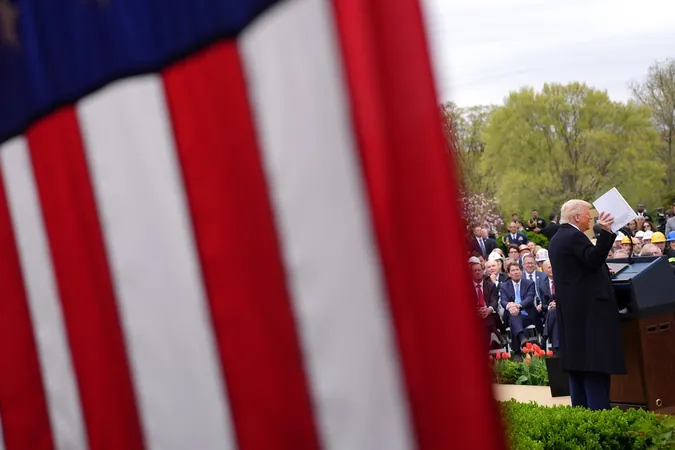
Trump’s ‘Liberation Day’ Tariffs: A Potential Economic Quake That Could Topple the Tariff Act of 1930!
2025-04-03
Author: William
Introduction
In a bold declaration dubbed “Liberation Day,” President Donald Trump unveiled sweeping tariffs aimed at reshaping American trade policy. Promising that this initiative would “make America rich again,” the President's ambitions are drawing skepticism from economists who predict a regressive shift back to the policies of the 1930s.
Details of the Tariffs
On this historical day, Trump implemented significant tariff increases, including 20% on imports from Europe, 24% on goods from Japan, and a staggering 34% on Chinese imports—these tariffs are layered on top of existing duties that are already in place against Beijing. The consequences of this unilateral decision are expected to ripple through the global economy and significantly raise the cost of goods for American consumers.
Economic Predictions
In the aftermath of the announcement, economists hurried to assess the overall impact of the new tariffs on U.S. imports. Fitch Ratings predicts the effective tariff rate could soar to 18%. Meanwhile, CIBC economists Andrew Grantham and Ali Jaffery project an effective rate of 20%, while Evercore ISI estimates it might reach 24% on a weighted-average basis. This marks an alarming rise from the modest 2.5% tariff rate that was applied to imports last year.
Historical Parallels
Such a dramatic increase in tariffs has drawn parallels to the infamous Smoot-Hawley Tariff Act of 1930, a policy which is widely criticized for exacerbating the Great Depression by sparking retaliatory tariffs worldwide and contracting global trade. Observers are concerned that the new tariffs could similarly trigger a series of economic repercussions, possibly igniting a trade war that damages relationships with both allies and adversaries.
Impact on Trade Relations
While Canada and Mexico dodged additional tariffs this round, they continue to navigate existing duties on imports of steel, aluminum, and auto parts. Furthermore, compliance with the United States-Mexico-Canada Agreement remains a contentious issue, as non-compliance results in substantial tariffs on various products.
Conclusion
The implications of Trump’s tariffs extend beyond mere numbers; they represent a significant ideological shift in American trade policy. Businesses and consumers alike are left braces for a turbulent economic environment filled with uncertainty. Will these measures truly benefit the American economy, or are we on the precipice of a new economic disaster reminiscent of the past? Only time will tell, but one thing is clear: the stakes have never been this high!









 Brasil (PT)
Brasil (PT)
 Canada (EN)
Canada (EN)
 Chile (ES)
Chile (ES)
 Česko (CS)
Česko (CS)
 대한민국 (KO)
대한민국 (KO)
 España (ES)
España (ES)
 France (FR)
France (FR)
 Hong Kong (EN)
Hong Kong (EN)
 Italia (IT)
Italia (IT)
 日本 (JA)
日本 (JA)
 Magyarország (HU)
Magyarország (HU)
 Norge (NO)
Norge (NO)
 Polska (PL)
Polska (PL)
 Schweiz (DE)
Schweiz (DE)
 Singapore (EN)
Singapore (EN)
 Sverige (SV)
Sverige (SV)
 Suomi (FI)
Suomi (FI)
 Türkiye (TR)
Türkiye (TR)
 الإمارات العربية المتحدة (AR)
الإمارات العربية المتحدة (AR)